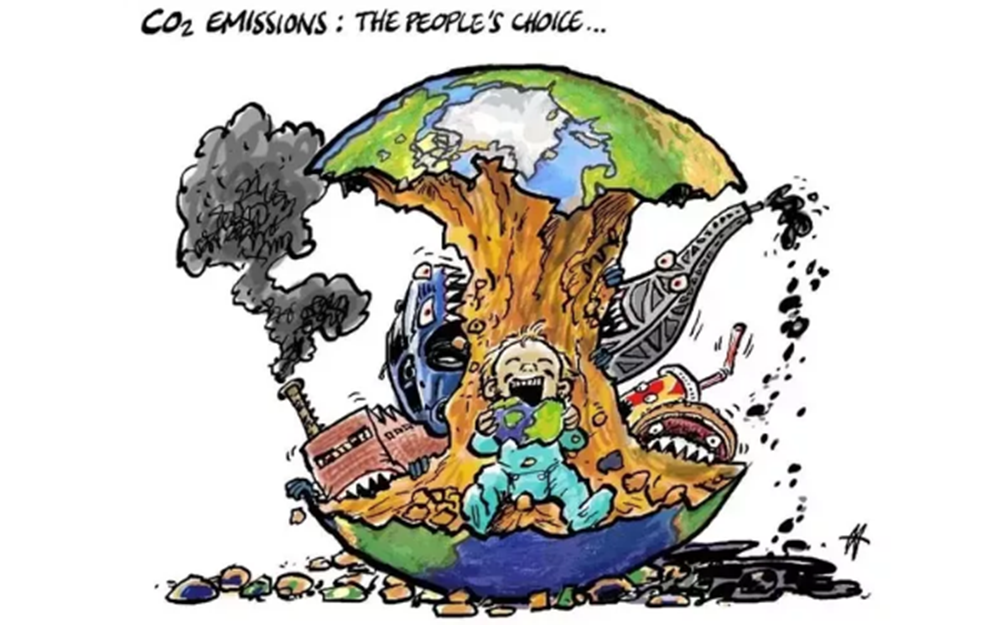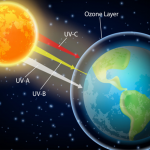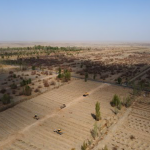Notice: Undefined offset: 3 in /www/html/fhss/wp-content/plugins/tiled-gallery-carousel-without-jetpack/tiled-gallery.php on line 554
Notice: Trying to get property 'ratio' of non-object in /www/html/fhss/wp-content/plugins/tiled-gallery-carousel-without-jetpack/tiled-gallery.php on line 554

The surrounding area around us is identified as the environment. The environment is a very complex entity and extends to natural resources such as water, land, energy, and soil, plants, animal and eco system. Although man made artificial environments and implements can be found in urban areas, they are also based on the natural environment and human labor.
However, our natural environment has been deteriorating for the past two centuries. About 60%-80% of the natural environment has been destroyed at a rapid pace (Chopra, 2016). Therefore, environmental damage can be called environmental degradation. Environmental degradation is defined as the depletion of water, soil and air including wild life extinction and ecosystem deterioration due to any change or disruption in the environment. The main factors that influence environmental degradation are urbanization, industrialization, overpopulation, intensification of agriculture, and increase in transportation. Considering these factors, it is understandable that the main causes of environmental degradation are the extreme involvement of various human activities. The rapid increase in population has been a factor in the increase in the number of adverse effects on the environment (Choudhary and Chauhan, 2015). Many scientists have even commented on this concept of overpopulation and predicted its adverse consequences. Among them Thomas Malthus is a very popular scientist who discusses about the relationship between population and environment. According to his book titled “Essay on the Principal of Population” published in 1789, he emphasized that the power of population reproduce is greater than the power of the earth production. That is, although the population shows geometric progression, the earth production increases according to arithmetic ratio. It ultimately leads to starvation around the world. Confirming the Malthus theory, Ian Golding in his book “Is the planet full” states that the world population is over 7 billion, of which 60% are in Asia, 15% in Africa, 11% in Europe, 9% in Latin America and the Caribbean, 5% in North America and 1% Oceania. The world population is growing by 1.2% every year and there are 9 births in the world every second of every day. Although the number of deaths per year has been subtracted, more birth have been reported to fill this gap. For example, the death toll from a New York City world Trade Center attack was 2819, but it recovers in 20 minutes.
But this situation has adversely affected the existence of the Earth. Due to the rapid extinction of environmental resources, every child born in to the world is a burden to the environment. Especially urban areas make a significant contribution to environmental degradation (Baus, 2017).in particular, the growth of urban population over the decades has had a very negative impact on the environment and according to statistics, in 2010 urban population was 3.5 billion and by 2016 it was four billion living in urban areas. According to the United Nations, the world’s population is expected to reach 8.3 billion by 2030, 9.1 billion by 2050, and 4.9 billion and 6.5 billion respectively. Due to overpopulation, it has created large cities and 80% of greenhouse gases are generated by cities and about 30%-40% emission generated by cities. Commercial buildings and other residential buildings, roads, land cover and other urban structures cause increase in ambient air and surface temperature. In addition, changing the water supply of the area to meet the urban needs due to urbanization is a cause of depletion of water resources.
Irregular sewage pattern, improper disposal of garbage, smoke and noise from vehicles and factories, and the discharge of polluted water from factories to waterways and sea cause deterioration of environmental water quality. Further, the influx of people from rural to urban areas will further increase the population of urban areas and as a result, cities will expand further, eventually leading man to use the forest close to urban areas for his habitat, destroying them. The habitat of animals that live in those areas will also be destroyed. Further, human activities such as the construction of large roads through forests and the conversion of forests into agricultural land to increase the food capacity of the growing population have led to the collapse of sensitive ecosystems. According to 2008 International Union for conservation of Nature reports, more than half of all mammals are decreasing and more than one third are engaged. 50% of plants and animals are extinct and primates and marine mammals are the most vulnerable to extinction in the world. The extreme human intervention has led to various environmental issues such as loss of biodiversity, depletion of the ozone layer, global warming, climatic changes, and water and food scarcity. For example, compared to the beginning of the 20th century, global temperature has risen by 10 F and continues to rise. The Montana Glacier National Park which had 150 glaciers, is now reduced to 30 glaciers. High level of CO2 emission from cities have contributed to climatic change. As a result of climatic change, California’s forests are subjected to severe forest fires each year and the arctic ice sheet continues to melt, and desertification, and flood conditions can be seen around the world. Scientist estimate that by 2080, the number of hungry people will reach between 140 million-1 billion due to food shortage because the earth production is lower than population growth. Water crisis is also another environmental issue because of depletion of water resources and improper usage of water. 1 billion people have already lost access to drinking water. This shows that there is a demand for water faster than the growing population. However, due to overpopulation, water resources are inadequate and human activity has exacerbated the issue (Baus, 2017).
Considering the above situation, overpopulation adversely affects environmental degradation. Therefore, there is an urgent need to establish sustainable control of all resources and to focus on different strategies to control population growth.
References
Chopra, P. (2016). Environmental degradation in India: Causes and consequences [Online] Available from: http://www.republication.com
Chaudhary, M.P and Chauhan, G.S (2015) Environmental degradation: Causes, Impacts and mitigation [Online] Available from: https://www.researchgate.net/publication/279201888
Baus, D (2017). Overpopulation and the impact on the environment [Online]. Available from: https://academicworks.cuny.edu/gc_etds/1906/
W.U.S. Fernando
Fourth year
Department of Geography








